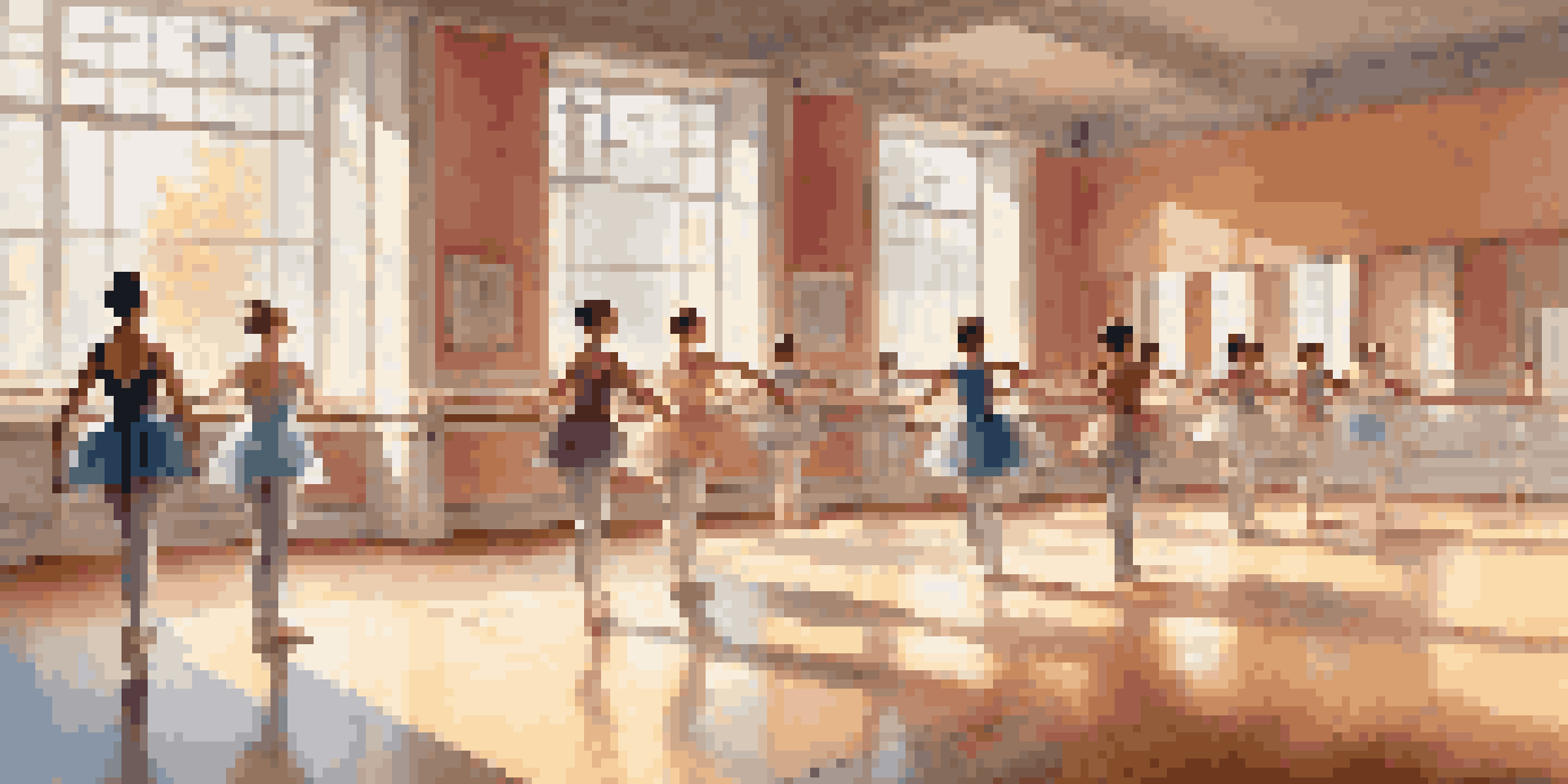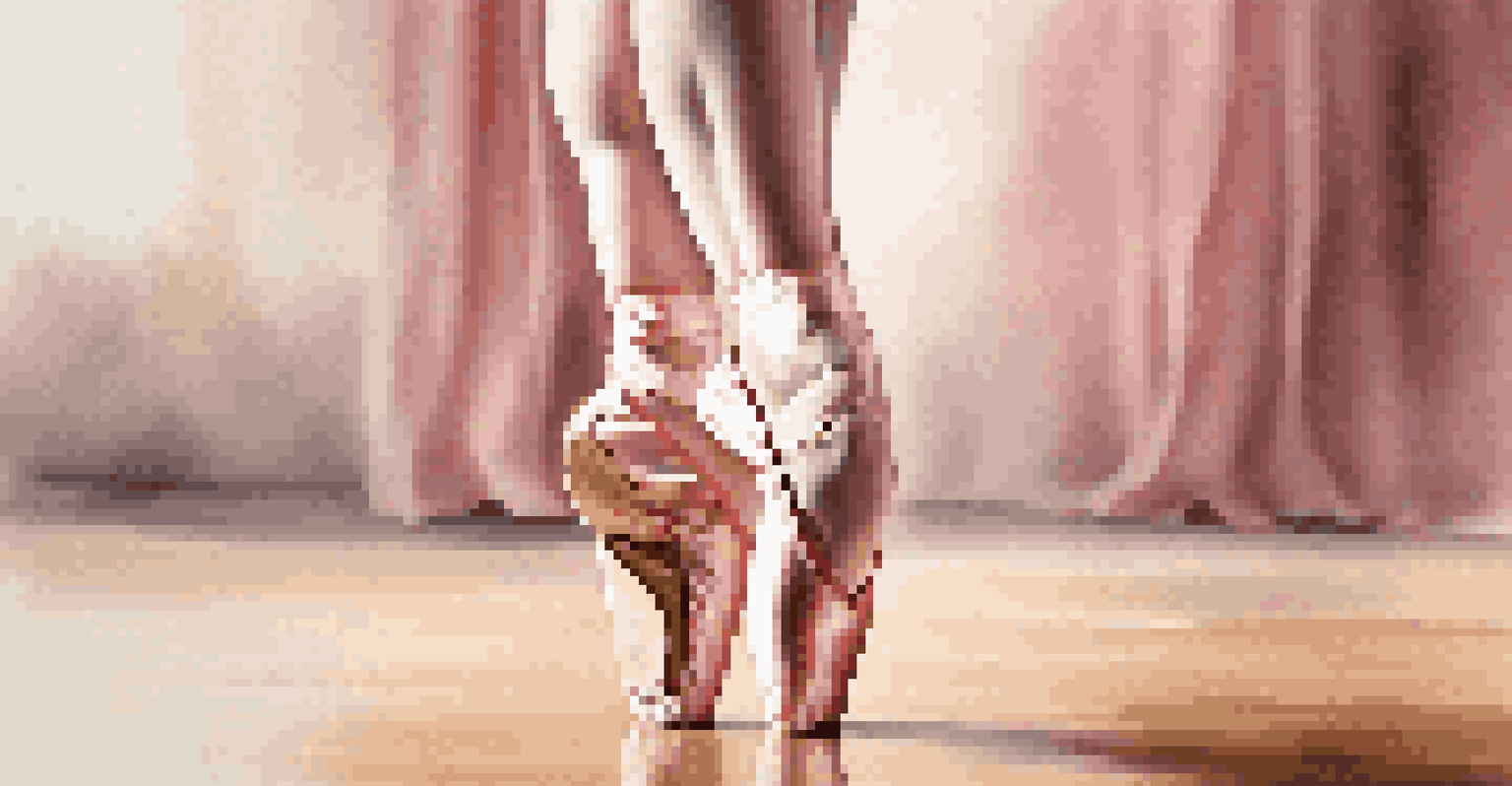Developing Assessments for Dance Skills and Techniques

Understanding the Importance of Dance Assessments
Dance assessments play a crucial role in evaluating a dancer's progress and skill level. They offer both educators and students valuable insights into strengths and areas needing improvement. Moreover, assessments help set clear goals, facilitating a focused approach to training.
Dance is the hidden language of the soul.
When assessments are well-designed, they can motivate students to push their limits and strive for excellence. They also provide a structured way to celebrate achievements, no matter how small. This ongoing feedback loop keeps students engaged and fosters a positive learning environment.
In essence, effective dance assessments are not merely tests; they are essential tools for growth. By prioritizing this aspect of dance education, instructors can ensure that students receive the support they need to thrive. After all, the journey of a dancer is just as important as the destination.
Defining Clear Objectives for Assessments
Before creating an assessment, it's vital to define clear and specific objectives. What skills are you aiming to evaluate? Having well-articulated goals sets a roadmap for both the instructor and the students, ensuring everyone knows what to expect.

For instance, if the objective is to assess flexibility, the assessment can include specific movements that highlight this skill. This clarity not only makes the assessment fairer but also allows students to prepare adequately. It’s like studying for a test; knowing what’s on the exam makes all the difference.
Dance Assessments Drive Growth
Effective dance assessments provide valuable feedback that motivates students and supports their development.
Setting clear objectives also aids in aligning the assessment with broader dance curriculum goals. This coherence strengthens the educational framework and enhances the overall learning experience. It transforms assessments from mere evaluations into meaningful learning opportunities.
Types of Assessments to Consider
There are various types of assessments that can be utilized in dance education, each serving its unique purpose. Formative assessments, like class observations and feedback, allow for ongoing evaluation and adjustment during the learning process. These are great for monitoring progress in real-time.
The only way to make sense out of change is to plunge into it, move with it, and join the dance.
On the other hand, summative assessments, such as end-of-term performances, provide a comprehensive overview of a student's skills at a particular point in time. These can be more formal and can serve as a capstone to a learning module. Think of them as the final exam that sums up all the hard work put in.
Additionally, peer assessments can foster a collaborative learning environment, encouraging students to learn from each other. By incorporating a mix of assessment types, instructors can create a well-rounded evaluation system that caters to diverse learning styles and promotes a deeper understanding of dance.
Incorporating Self-Assessment Techniques
Self-assessment is a powerful tool that empowers students to take ownership of their learning. By reflecting on their own skills and techniques, dancers can identify their strengths and areas for improvement. This process fosters a sense of accountability and encourages personal growth.
Incorporating self-assessment techniques can be as simple as having students maintain a dance journal. They can record their feelings about their progress, note challenges, and set personal goals. This habit not only enhances self-awareness but also reinforces the learning objectives established by the instructor.
Clear Objectives Enhance Learning
Defining specific objectives for assessments helps both instructors and students understand expectations and improves preparation.
Moreover, self-assessment can be integrated into formal assessments, providing a holistic view of a dancer's capabilities. When students assess themselves alongside instructor evaluations, it encourages a dialogue about performance and technique. This collaborative approach enriches the overall learning experience.
Designing Criteria for Objective Evaluation
Creating clear and objective criteria for assessment is essential for fairness and transparency. This means establishing specific benchmarks for what constitutes success at different skill levels. When students know the criteria, they can better prepare and understand what is expected of them.
For example, if evaluating a pirouette, criteria might include balance, technique, and execution. By breaking down the skill into measurable components, both instructors and students can focus on particular areas. This method not only simplifies the evaluation but also enhances learning outcomes.
Moreover, having a rubric can streamline the grading process, making it easier for instructors to provide consistent feedback. This structured approach ensures that assessments are not subjective but based on clear, predefined standards. It builds trust between students and instructors, fostering a positive learning environment.
Utilizing Technology in Dance Assessments
In today's digital age, technology can enhance the assessment process significantly. Video recordings of performances allow for detailed evaluations that can be reviewed multiple times. This method provides a clearer picture of a dancer's technique and progression over time.
Additionally, apps and software designed for dance education can facilitate tracking of individual progress. These tools can offer tailored feedback and create a more personalized learning experience. It’s like having a virtual coach that provides insights based on real-time data.
Technology Modernizes Assessments
Utilizing technology like video recordings and dance apps enhances the evaluation process and engages students in their learning.
Incorporating technology not only modernizes the assessment process but also engages students in new ways. It makes learning more interactive and exciting, capturing the interest of a tech-savvy generation. Ultimately, leveraging technology can lead to a more holistic understanding of dance skills.
Continuous Improvement of Assessment Methods
Assessments should not be static; they need to evolve alongside the dancers and their learning needs. Regularly reviewing and refining assessment methods ensures they remain relevant and effective. This continuous improvement reflects the dynamic nature of dance itself.
Gathering feedback from students about their assessment experiences can provide valuable insights. Understanding what worked and what didn’t can help instructors tailor their methods to better serve their students. It’s akin to a choreographer adjusting a routine based on dancer input for optimal performance.

Moreover, staying updated on best practices in dance education can inspire fresh ideas and innovative approaches. By fostering a culture of continuous improvement, instructors can create a vibrant learning environment where assessments contribute meaningfully to a dancer's journey.